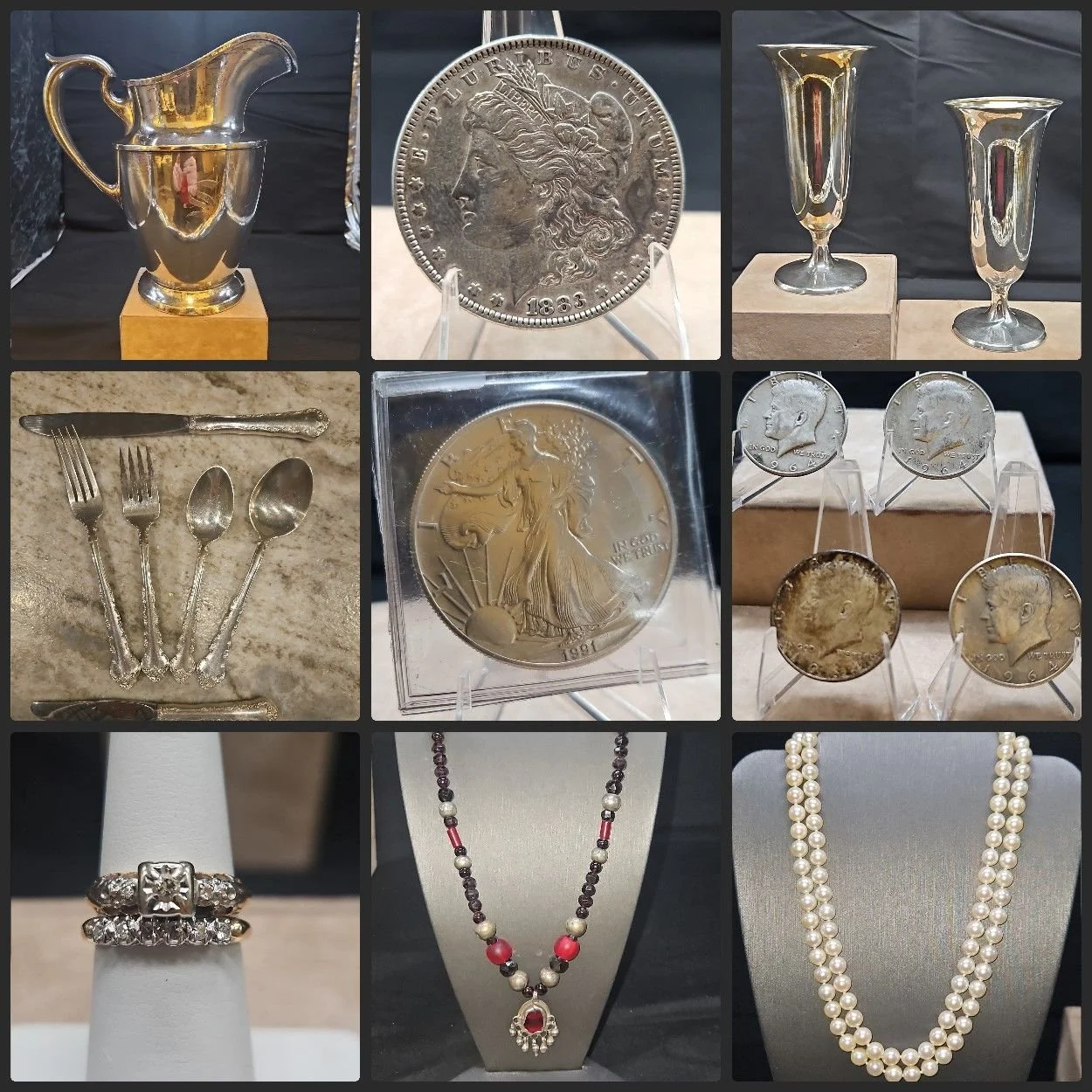The Timeless Bond Between Rock Music and Sterling Silver Jewellery
“I read the news today, oh, boy
About a lucky man who made the grade…”
“You need cooling, baby, I'm not fooling
I'm gonna send you back to schooling…”
“We will, we will Rock You…”
What do these lyrics have in common? Each captures the rebellious energy, freedom, and attitude that have defined rock and roll since the 1950s.
This genre didn’t just change music, it revolutionized how generations saw themselves. Rock 'n' roll became a voice for youth, giving space to be heard, seen, and reflected in a way previous adult-controlled music never had.
Beyond sound, rock music ignited a new era where fashion became inseparable from self-expression. Artists used bold clothing like leather jackets, boots, wild hair, to embody anti-conformist ideals, forever transforming style into a symbol of individuality and social resistance.
Sterling Silver and the Rock and Roll Era
Sterling Silver
Sterling silver is a high-quality alloy made up of 92.5% pure silver and 7.5% other metals, usually copper. The addition of other metals strengthens silver, since pure silver is too soft for practical use. Sterling silver is widely used in jewellery, cutlery, coins, and decorative objects because of its bright appearance, durability, and resistance to tarnishing when properly cared for. It has been valued for centuries as both a luxury material and a functional one.On August 26th, Taylor Swift got engaged to NFL star Travis Kelce in a magical and heartwarming moment, marking the beginning of the next chapter of their beautiful and everlasting love story.
Rock and Roll Era
Image source - https://wallpapercave.com/rock-and-roll-wallpapers
The rock and roll era refers to the period beginning in the mid-1950s, when a new style of music emerged by blending rhythm and blues, gospel, and country influences. Popularized by artists like Elvis Presley, Chuck Berry, and Little Richard, it was known for energetic beats, electric guitars, and youthful rebellion. Rock and roll reshaped global culture, influencing fashion, attitudes, and the music industry throughout the 1950s and 1960s.
The Unique Bond
Rock and roll stars embraced sterling silver in the mid to late 20th century because it captured the essence of rebellion, individuality, and artistic freedom. Unlike gold, which traditionally symbolized wealth and conformity, sterling silver carried a raw, edgy appeal that resonated with musicians pushing boundaries. Thick silver rings, layered chains, and bold bracelets became not just accessories but statements of identity. For rock artists, silver reflected their desire to stand apart from mainstream society, embodying the grit, glamour, and unpredictability of their music.
They often chose sterling silver jewellery because it was durable and affordable. Silver’s versatility allowed for bold designs like skulls, chains, and heavy rings, making it perfect for self-expression.
As these artists gained influence, their style quickly trickled down to the masses. Young fans saw silver adornments as a way to mirror their idols, forging their own sense of belonging within the rock movement. Just as fans adopted jeans, leather jackets, or bold hairstyles, silver jewellery became a cultural marker of the era’s attitude. From the flashy rock idols of the 70s to the grunge icons of the 90s, each generation reinterpreted silver’s meaning, blending it seamlessly with their music and fashion. This connection between jewellery and artistry gave sterling silver a permanent association with freedom, self-expression, and nonconformity, ensuring its influence extended well beyond the stage and into everyday culture.
Slash’s Sterling Silver Legacy - A Study
Image Source - https://www.pinterest.com/pin/644366659165558236/
Slash, the iconic guitarist of Guns N’ Roses, embodies the powerful connection between sterling silver and rock and roll. Beyond his top hat, curls, and sunglasses, his love for bold silver jewellery, especially skull rings, has become a defining part of his image. These handcrafted 925 sterling silver pieces, often large and intricately detailed, symbolize rebellion, authenticity, and the intensity of his music. On stage, the shine of his silver rings and chains catches the lights during solos, adding drama and spectacle that complement his legendary guitar playing. Unlike many artists who change their style constantly, Slash has refined and stayed true to his silver-adorned look, allowing it to evolve subtly without losing its essence. In addition to skull rings, he often wears chunky chains, bracelets, and pendants that expand his silver aesthetic while creating a cohesive stage presence. His dedication shows how sterling silver is more than an accessory; it is a visual language of rock identity, self-expression, and defiance. Through Slash, silver remains forever tied to the culture of rock rebellion.
The Current Landscape
The craze for sterling silver jewellery shows no signs of slowing down, continuing to resonate with fans of rock and roll and new generations alike.
What began as a rebellious fashion statement has transformed into a global industry, with entire sections on platforms like Etsy and luxury brands such as Lazaro showcasing sterling silver collections.
Image Source - https://www.etsy.com/market/rock_and_roll_sterling_necklace
Image Source - http s://www.lazarosoho.com/mens-rock-n-roll-jewelry
Many jewellery makers now specialize in rock-inspired designs, including companies like Rocking Out Jewellery Co. and Silver Luthier, who craft pieces that maintain the edgy, unconventional spirit tied to rock culture.
Image Source - https://rockinoutsilver.com/
Image Source - https://rockinoutsilver.com/
Image Source - https://www.silverluthier.com/
Image Source - https://www.silverluthier.com/
At the same time, artisans are innovating by blending tradition with modern aesthetics. Brands such as Serpent Forge create standout pieces by combining 925 sterling silver with touches of gold, opals, sapphires, and other precious stones to produce designs that are distinctive and difficult to imitate.
Image Source - https://serpentforge.com/ja
Image Source - https://serpentforge.com/ja
Sterling silver and rock ’n’ roll have always shared the same heartbeat - bold, rebellious, and unapologetically expressive. Silver isn’t just worn; it’s lived in, becoming part of the stories told on stage and beyond. Much like the music itself, it breaks rules, carries meaning, and never really goes out of style. It reflects attitude, identity, and the freedom to be different. That’s why silver has lasted alongside rock for decades, it’s more than an accessory, it’s a symbol of expression. This enduring creativity ensures that sterling silver remains not just a fashion choice, but a lasting cultural symbol.












